EMDRIA: The Healing Soldier Project
- Global Health
- Public Policy
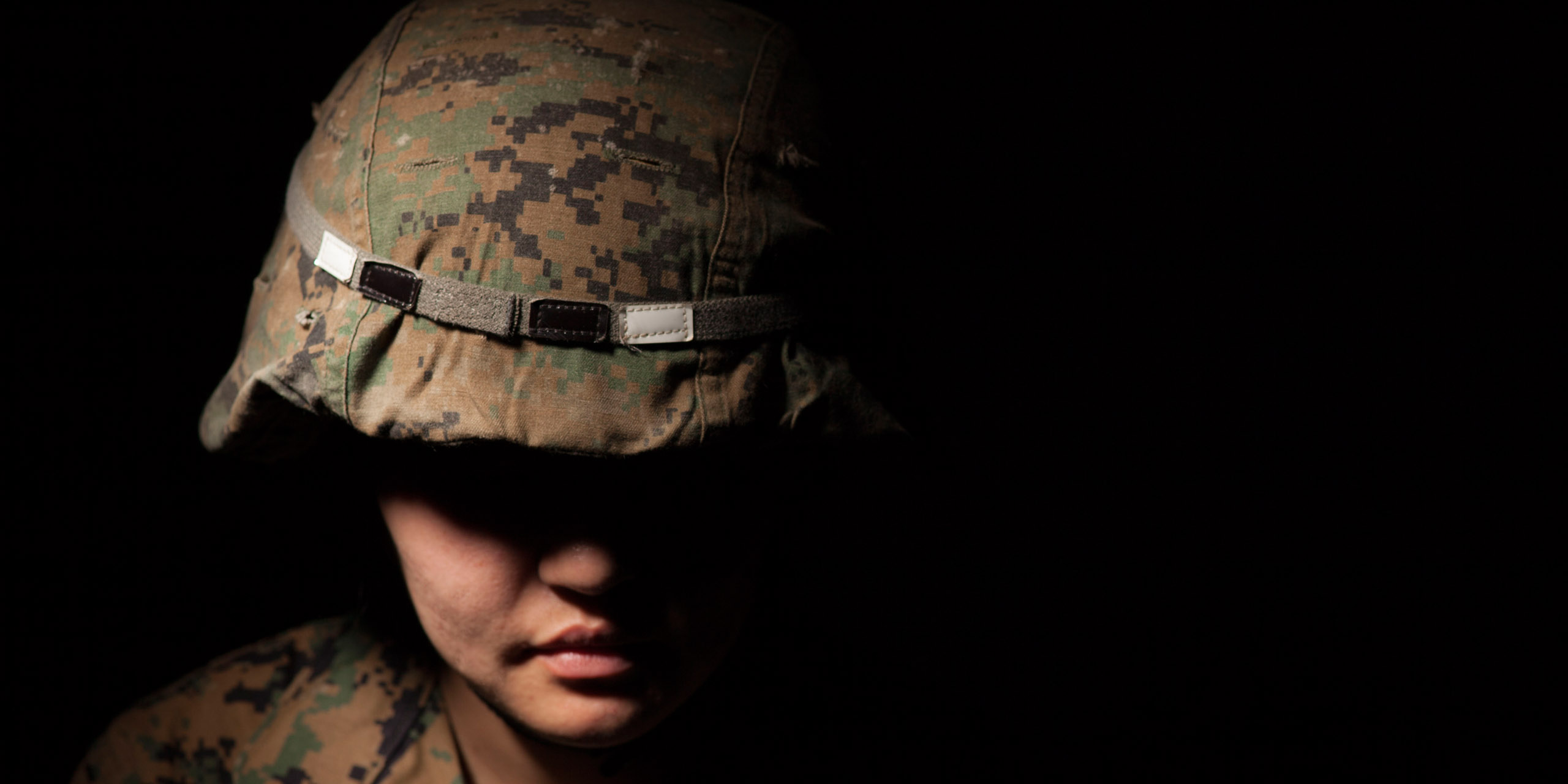
The Advocacy Committee of the Texas-based EMDR International Association (EMDRIA) sponsored an Advanced Graphic Design studio in the fall of 2015 for students to research and discover the components of effective communications campaigns and then create cross-platform campaigns that deliver a clear and engaging message about the value of Eye Movement Desensitization and Reprocessing (EMDR) therapy as treatment for traumas especially Post-Traumatic Stress Disorder (PTSD). Social media advertising campaigns were launched and actively tracked as to their effectiveness in eliciting target responses, a process that presented students and client with authentic real-life feedback on campaign performance.
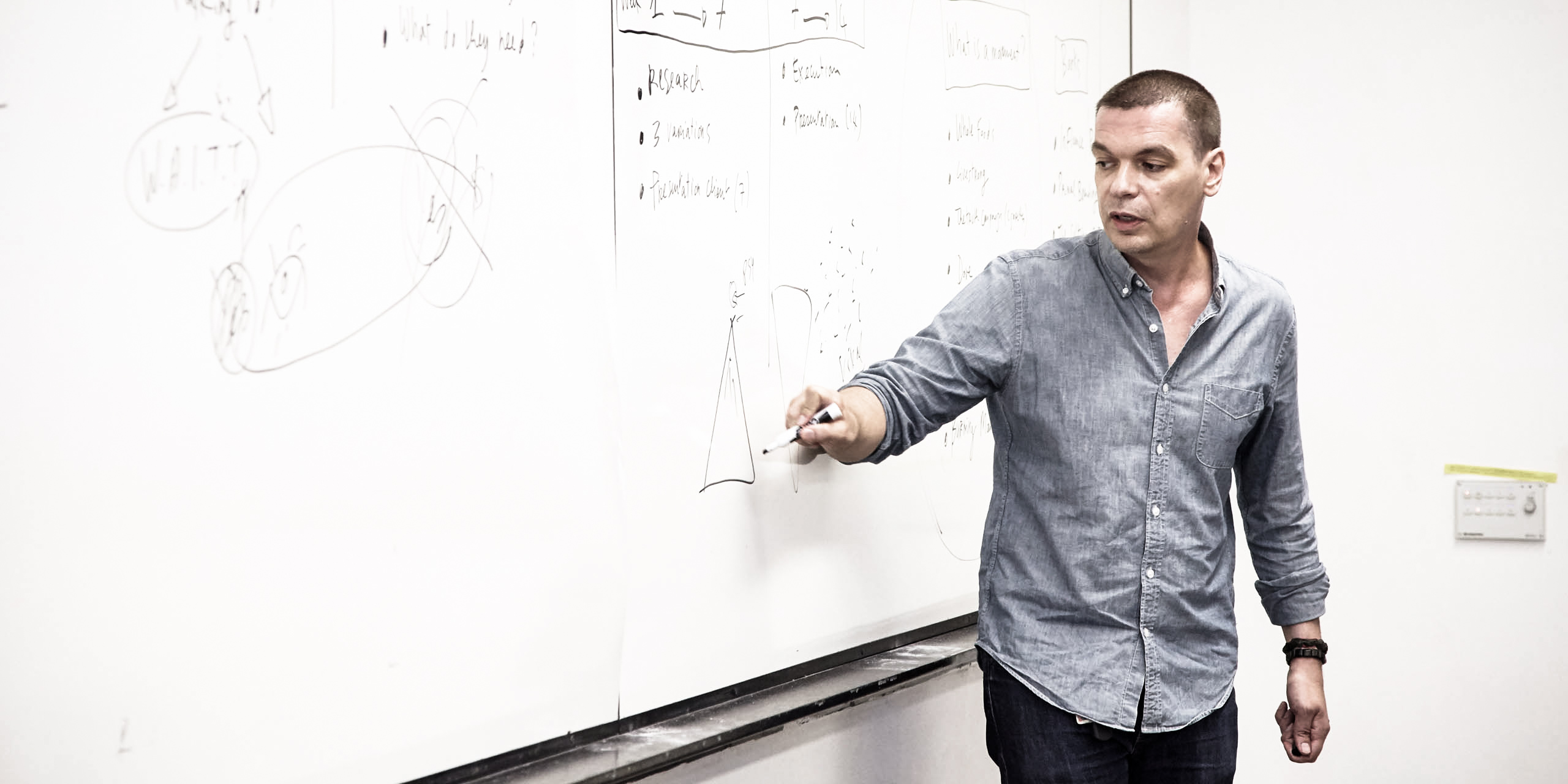
“What we are doing here, what students are learning, is how to help mission-driven organizations with difficult subjects, like EMDRIA with Post Traumatic Stress Disorder, get their message out to audiences and thrive with memorable and effective campaigns.”
– Guillaume Wolf, Faculty, Graphic Design
Project Overview
Fall 2015
Crafting Strategical Communications Campaigns for Non-Profits
The EMDR International Association (EMDRIA) sponsored this Designmatters Studio, hosted in partnership with the Graphic Design department, which challenged students to create advertising/branding campaigns that would raise awareness and elicit positive responses from targeted audiences about this unique therapeutic approach of treating traumas especially Post-Traumatic Stress Disorder (PTSD).
Students investigated the world of PTSD, discovering the destructive psychological effects that victims have after experiencing an intense trauma (such as fighting in a war or war-like environment), surviving abusive situations (sexual, physical or emotional) or enduring other extraordinary tragic experiences (natural disasters, etc.). Students also researched how the general public views PTSD and their attitudes about people who suffer from these damaging memories.
Concurrently, students also delved into the ingredients of successful advertising/branding campaigns, learning how communicators strategically tell stories with words and images which scaffold toward a desired outcome of public action or thought.
Special attention was also paid to the nature and challenges of working with nonprofit organizations. Successful campaigns often are organic, crafted to reach a specific target group with memorable messaging that audiences typically react and respond to positively.
Students worked in small teams to create variations for the EMDRIA brand identity, logo options, visual treatments, etc. The class as a whole reviewed these concepts and collectively decided the direction of their selected campaigns, crafting backstories that would tell not just the realities of living with PTSD but how EMDR therapy can help those who suffer.
The students were structured as if they were working in a real-life advertising agency, each using their skills (photography, graphic design, product design, etc.) to achieve a cooperative goal of presenting the client with research-tested, poignant and cost-effective campaigns.
Social media campaigns were actually launched via Facebook ads and students tracked results for each campaign noting response rates for target audiences.

“We love that the students extensively used research and applied it to the campaigns because we are researchers at heart. We often start in research so this direction resonated with us so much and was very exciting for several of us who were curious about the demographics.”
– DaLene Forester, President Elect of EMDRIA
Background
Military veterans, survivors of physical abuse, disaster victims – countless individuals have suffered extraordinary painful experiences with memories kept fresh and alive under the psychological designation of Post-Traumatic Stress Disorder (PTSD). The moniker was first referred to in the late 1970s due to diagnoses of U.S. military veterans of the Vietnam War; the concept, however, had been known previously as “shell shock” and “battle fatigue.”
Through the years, families and friends have witnessed the emotional breakdown of their loved ones who are unable to stop traumatic memories from replaying. Psychologists have developed various options to treat patients with PTSD including medications, cognitive behavior therapies or a combination of both. The ultimate goal is to diminish the debilitating effects of these memories, putting these experiences in their proper mental place.
One unique therapy in treating PTSD is Eye Movement Desensitization and Reprocessing (EMDR) which was conceived by American psychologist Francine Shapiro in 1987. Developed outside of academia, EMDR was first considered extremely experimental but has since gained acceptance in the mental health community. Over the years, the therapy has been endorsed by the World Health Organization, the U.S. Department of Veterans Affairs, the Department of Defense, the U.S. Department of Health and Human Services and the American Psychiatric Association.
A unique combination of talk therapy and eye stimulation, EMDR has helped an estimated two million people relieve psychological distress according to the EMDR International Association (EMDRIA).
In existence for 20 years, EMDRIA has 6,000 members in the United States and advocates on behalf of the treatment and the proper training for licensed mental health providers. Currently, there are 30,000 certified therapists and 750 certified consultants around the world who have been formally trained in EMDR by EMDRIA.
The association is active in 26 countries and while growing in the United States, EMDR is not widely used stateside and the public is largely unaware of the therapy.
Like many nonprofits, EMDRIA has a small and passionate staff and Board of Directors to promote the therapy, clinical training and outreach efforts.
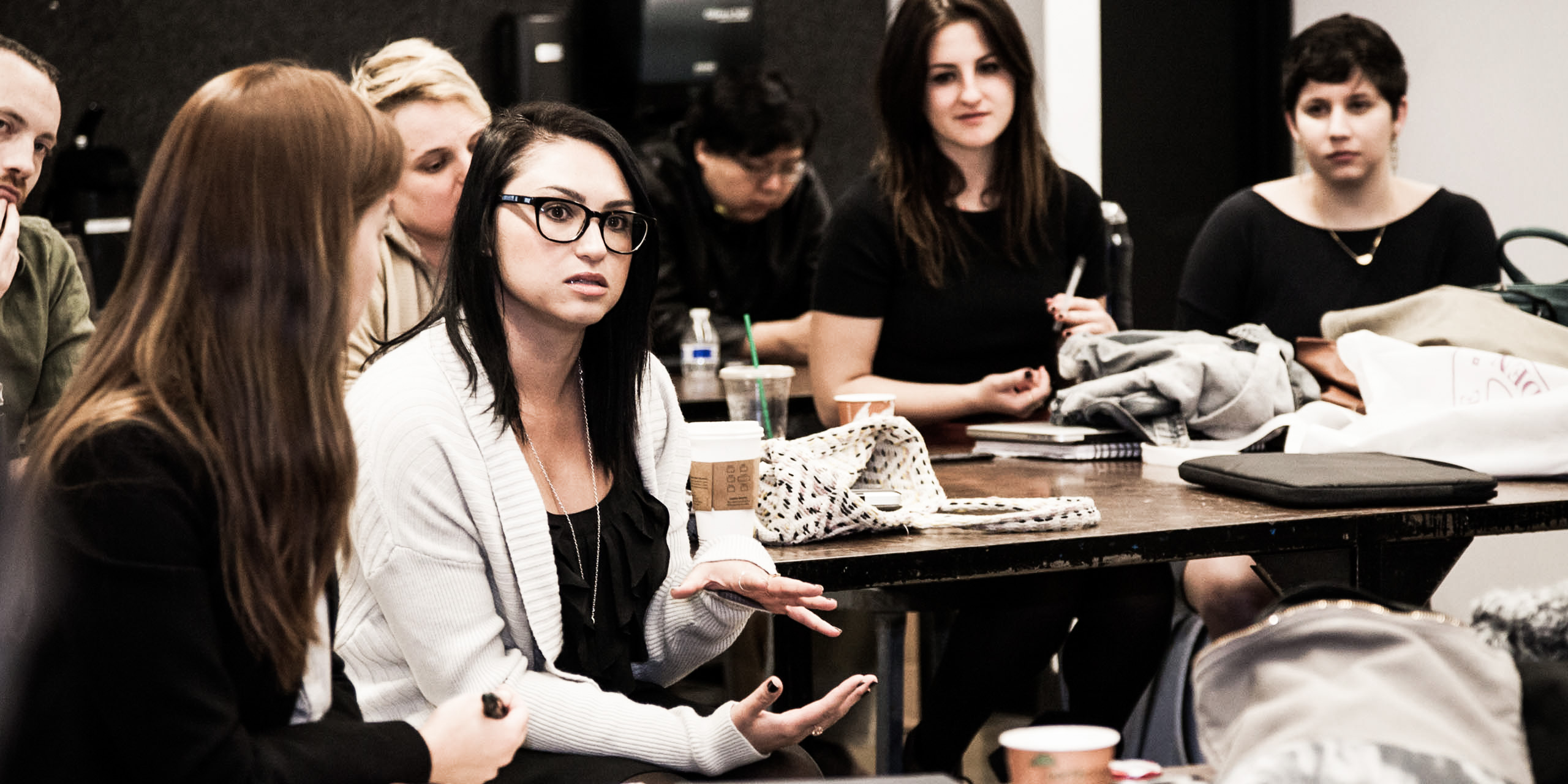
Research and Project Development
Many nonprofits’ missions center on subjects that are sensitive or uncomfortable for the general public to embrace, which presents a challenge for creating effective, positive messages and calls to action in today’s marketplace, where potential audiences for a nonprofit- including potential clients, members or donors- are accessing content from multiple platforms everyday.
In this studio, students learned how targeting audiences to take action requires specialized research that leads to a well-executed campaign that produces positive storytelling, brand connection and audience response. Even within the constraints of a small budget, many nonprofits can have big exposure when they target audiences with proper messaging.
Structured as a real-life advertising/branding team, students drew on their specific talents to collaborate on an EMDRIA campaign to raise awareness of their therapeutic approach of treating PTSD by targeting the friends, family and co-workers of those who suffer from the mental disorder.
Research was three-fold: to better understand the components of successful campaigns/movements, to gather information about PTSD and the public’s awareness of it, and to learn from the results of actual tested social media advertising campaigns.
Students examined how successful movements and brand campaigns are created and how communicators build excitement as they tell a good story. Students discussed the psychology of persuasion and how today’s Internet enables individuals to be influencers.
Students went into the field to conduct interviews about the public’s knowledge of PTSD and if they think the condition is curable (most had heard the phrase but many were not sure if it was treatable).
Additionally, students also had the opportunity to talk with filmmaker Roman Wyden and independent advertiser consultant Karen Lau who have worked extensively on PTSD projects for the Veteran’s Administration. Students questioned them on how they approach PTSD as a subject and how the duo worked with the V.A. to help hone in on messaging. Students also got insight into the inner workings of the V.A. and the complexities of working with veterans and their families from White House Design Innovation Fellows Sarah Brooks and Andrea Ippolito, who gave a remote guest lecture via Skype on how they are innovating service design at V.A.s across the United States.
Broken into smaller student teams, one group created brand identity designs while the other concentrated on crafting Facebook advertising campaigns. This social media platform was determined to be an optimal way to reach intended audiences, be cost-effective and would allow students to test direct results of three conceptual design options and retool if necessary.
The branding group revamped the current EMDRIA logo to give it a modern, fresh and approachable feel which would connect with the intended audience.
There was much discussion of using the word “Trauma” as opposed to “PTSD” for the campaigns; both options were used to discover which word garnered better responses.
Throughout the studio, students were reminded that all campaign aspects (from logo color to ad placement) must revolve around the questions: “Who Am I Talking To?” And “What Is The Specific Message For This Specific Audience?”
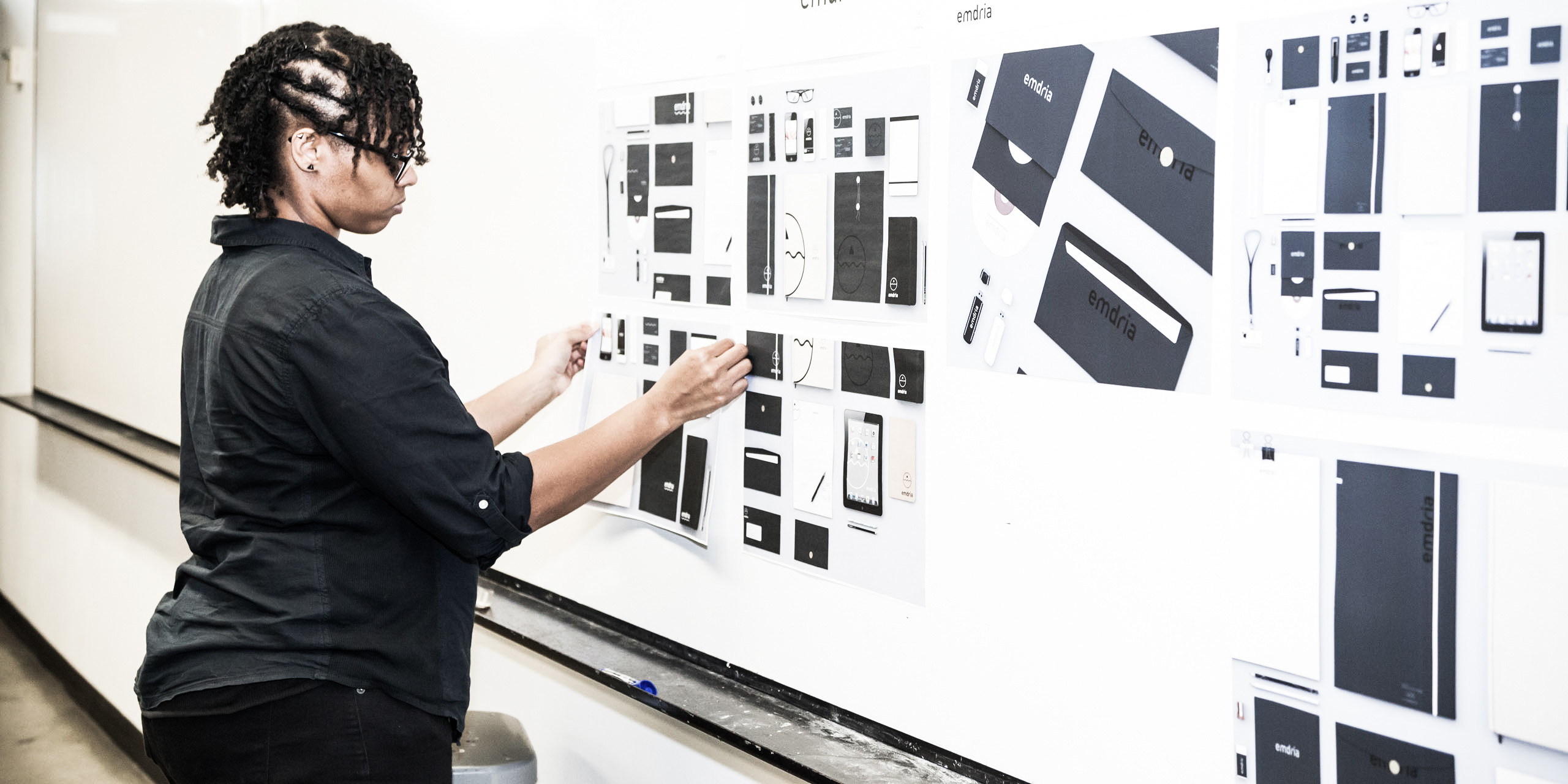
Final Presentation
Students collaboratively presented their EMDRIA campaign to the client, discussing research they performed, branding options they designed, active campaigns they launched and real-life results they tracked. After the presentation, process books that contained style guides and high-resolution files of all campaigns making them “plug and play” ready for the client to use were distributed.
Student pairs presented different campaign aspects.
The branding team discussed how they went through many variations of font possibilities and symbolic imagery for the new EMDRIA logo. Even though EMDRIA is a medical organization, the students didn’t want the logo identity to reflect a strictly scientific group. The circle icon was chosen to represent a unifying wholeness and psychological restoration. The gray and orange color combination creates a balance of corporate professionalism with a soothing and friendly sense of calm and approachability.
The branding and logo was mocked up to show how it would be used on stationary, business cards, letterheads, pens and even a website landing page.
The campaign group crafted different ads targeted to two groups: friends and family members of trauma survivors, and military veterans. Using dramatic original photographs and incorporating the EMDRIA logo and type font, ad campaigns were launched on Facebook and responses tracked to determine which campaign received more “click-throughs”. Additionally, “trauma” and “PTSD” verbiage was tested to see which word received the most response; “trauma” was found to be more engaging.
The first campaign – aimed at family members – was a selection of three photographic portraits of people hiding their pain: a young girl, a professional older woman and a skilled working man. Taglines were: Can (S)He Have a Normal Life?
Directed to friends of those suffering, the second campaign featured dissolving large photographic black and white faces; the tagline: You Can Help Heal Trauma (PTSD). Both male and female versions were tested.
The third campaign presented photographs of veterans (male and female) with their eyes darkened by their helmets. The tagline: Help Your Brother/Sister Heal From Trauma (PTSD).
In addition to the three Facebook-sized ad campaigns, photographic imagery was mocked up for billboards, bus benches, buses and magazine ads.
Overall, the campaign and image that proved the most effective was of the young girl the in the first campaign.
A list of potential ad streams was assembled comparing ad placement vs cost.
Convention collaterals were also created for EMDRIA to use at its annual conference, as well as at other conventions and exhibitions. Prototypes for convention/outreach booth space, backdrops and banners reiterated the logo and branding identity as well as reinforced the slogan “You Can Heal Trauma.” Mock-ups were designed for give-away items such as t-shirts, mugs and tote bags.
Finally, a list of potential EMDRIA ambassadors was compiled. One of these popular celebrities and sport figures could be a spokesperson to help raise awareness that healing from trauma is possible. The list includes: Rowan Blanchard (young actress involved in social issues), Joe Simpson (English author/ motivational speaker who recovered from a near-deadly climbing accident), Monica Seles (tennis star who survived being brutally attacked), Omar Epps (well-known rapper and actor) and Terrell Owens (former NFL player and now motivational speaker).
“This studio intrigued me because it dealt with veterans and I have been in the Navy for 14 years and I wanted to give back in some way shape or form. Our end product is very useful and speaks to the demographics we identified. We have an outcome that I am very proud of.”
– Chris Stoltz, Student, Graphic Design
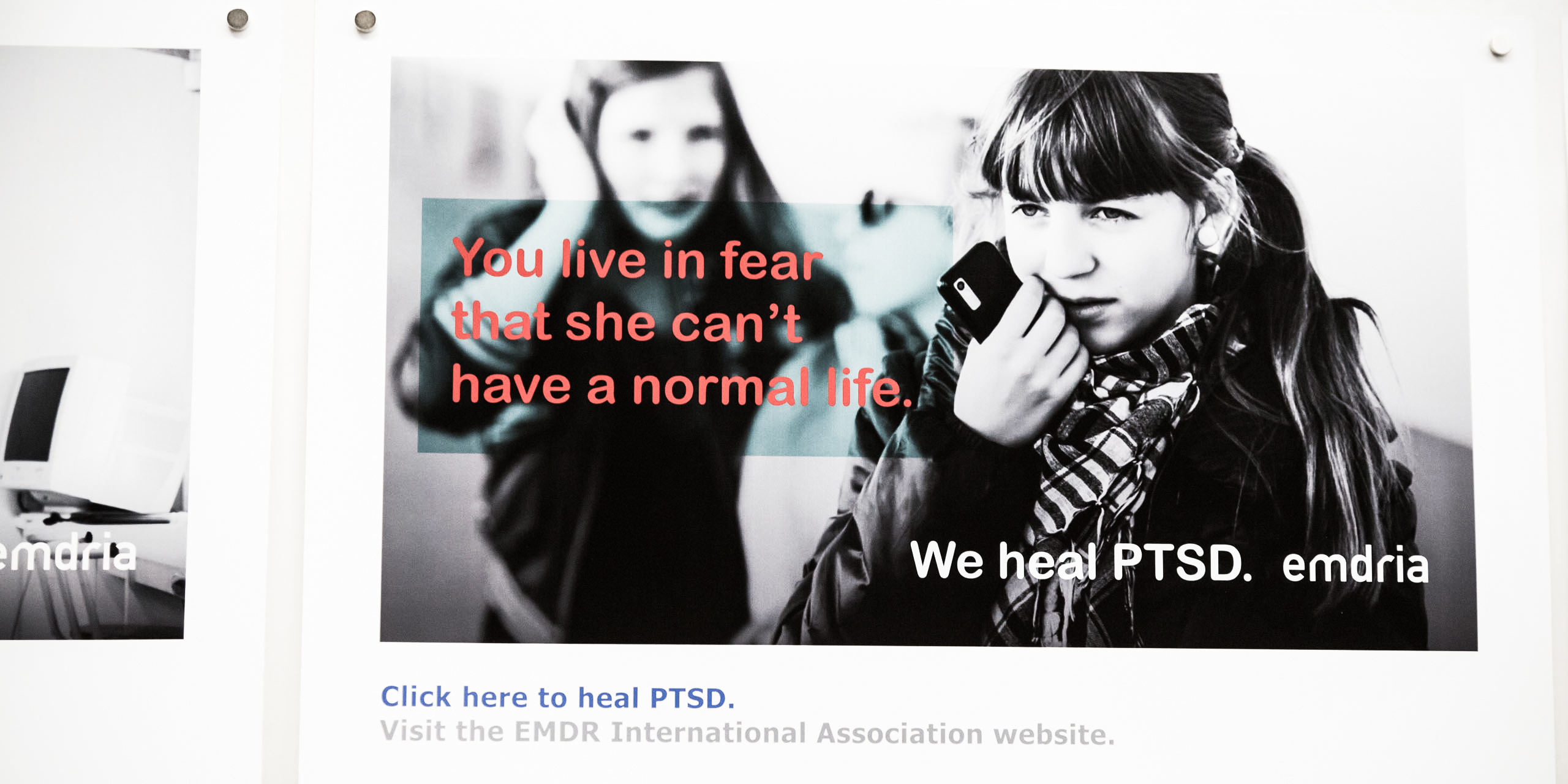
EMDRIA Documentary
“The PSA is an proclamation to the world of the healing power of EMDR therapy and an affirmation of what our therapists do. It was unveiled at our conference in Minneapolis where the attendees were delighted and thrilled with how Ryan captured the essence of the healing power of EMDR therapy.” – Mark G. Doherty, CAE, Executive Director, EMDR International Association
